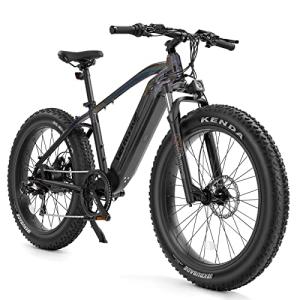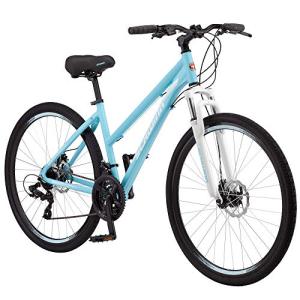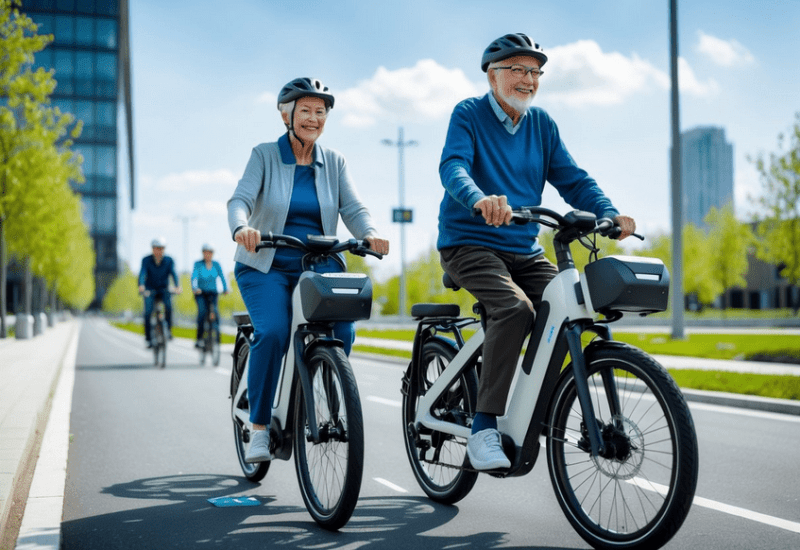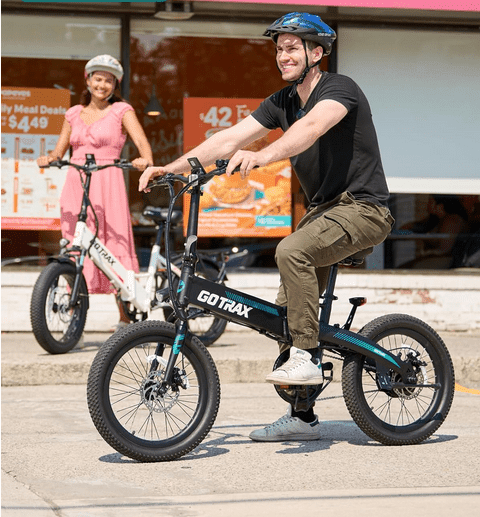Choosing the right e-bike can feel overwhelming, especially for beginners. With various styles, features, and costs, it's essential to understand what best fits personal needs and preferences.
A well-picked electric bike can elevate daily commuting, enhance outdoor adventures, and provide a fun way to stay active.

Key features like frame material, battery life, and motor type play significant roles in determining the right choice.
Considering practical elements, such as budget and maintenance needs, can simplify the decision-making process.
E-bikes offer numerous benefits, making them a popular option for riders of all ages, but finding the right one requires some thought.
Investing time in research and evaluation will ensure the e-bike chosen meets specific riding habits and lifestyle. With the right guidance, selecting the perfect electric bike can lead to enjoyable rides for years to come.
Key Takeaways
- Knowing different types of e-bikes helps make a better choice.
- Understanding budget and maintenance needs is crucial.
- Key features impact the riding experience significantly.
Understanding E-Bike Basics

E-bikes, or electric bicycles, come in various types and are made up of essential components that enhance the riding experience. Knowing these basics helps a buyer make a well-informed decision.
Types of E-Bikes
There are three main categories of e-bikes: pedal-assist, throttle, and combo.
-
Pedal-Assist: This type uses a battery-powered motor that boosts the rider's pedaling effort. It's great for exercise and longer rides.
-
Throttle: Throttle e-bikes operate like scooters. Riders can use a hand throttle to control speed without pedaling.
-
Combo E-Bikes: These offer both pedal-assist and throttle options, providing flexibility depending on the rider's preference.
Understanding these types is essential. Different models suit various riding styles, whether commuting, leisure, or off-road adventures.
E-Bike Components and Technology
Key components of an e-bike include the motor, battery, and shifter.
-
Motors: E-bikes typically have either a mid-drive motor or a hub-drive motor. Mid-drive motors are located near the pedals and provide a balanced ride. Hub-drive motors are found in the wheel and can make the bike feel heavier.
-
Battery: The battery powers the motor and is crucial for range. Higher-capacity batteries allow for longer rides without recharging.
-
Shifter and Component Quality: A good shifter enhances gear changes, making riding smoother. Higher-quality components can improve overall performance and durability.
Together, these elements create an e-bike that meets the rider's needs, ensuring a pleasant and efficient cycling experience.
Evaluating Your Cycling Needs
Choosing the right e-bike requires understanding personal cycling needs. This includes selecting the type of bike that suits specific activities and ensuring proper comfort and fit.
Choosing the Right Type for You
There are different types of e-bikes, and each serves a unique purpose. A mountain bike is ideal for trails and rough terrains. If someone plans to bike on paved roads, a road bike or gravel bike would work best.
For urban commuting, a folding bike offers convenience for storage and public transport. A cargo bike is excellent for carrying heavy loads or shopping.
- Hybrid bikes blend features from various types, making them versatile.
- Trekking and touring bikes are designed for long-distance rides.
Understanding the intended use helps in making a suitable choice.
Comfort and Bike Fit
Comfort is vital when choosing an e-bike. A proper bike fit can prevent discomfort and enhance the riding experience. Factors to consider include frame size, seat height, and handlebar position.
It’s important to test the bike to find the right fit. Key aspects to check:
- Seat Height: Feet should reach the ground easily when stopped.
- Reach: Riders should comfortably hold the handlebars without overextending.
- Stability: The bike should feel secure and balanced.
Ignoring comfort may lead to fatigue or injury during rides. Prioritizing fit ensures enjoyable cycling experiences, whether commuting or exploring trails.
Key Features to Consider
When selecting an e-bike, understanding key features is essential. Focusing on motor and battery performance, as well as assistance levels and ride quality, will help in making an informed choice.
Motor and Battery Performance
The motor type plays a crucial role in how an e-bike performs. There are two main types: mid-drive and hub drive.
- Mid-drive motors provide better weight distribution and allow users to utilize the bike's gears effectively. This option is ideal for hilly terrain.
- Hub drive motors are often simpler in design and easier to maintain. They are generally found in city bikes and can offer speeds suited for urban commuting.
Battery capacity, measured in watt hours (Wh), is another vital consideration. A higher capacity means more range.
- For example, a 500 Wh battery can offer longer rides compared to a 250 Wh battery.
- Look for models with quality battery brands like Shimano Steps, as they can enhance performance and longevity.
Assistance Levels and Ride Quality
E-bikes typically feature different assistance levels, including eco mode and higher power modes.
- Eco mode conserves battery life, allowing for longer rides with less power.
- Higher assistance modes provide a boost for steep climbs or faster commuting.
The ride quality also depends on how these assistance levels interact with the bike's design.
A smooth pedal assist can make a significant difference. High-performance models offer seamless transitions in support, making cycling feel natural.
Furthermore, comfort can be affected by features like frame geometry and tire type, which vary across different e-bike styles. Choosing the right combination will lead to a more enjoyable riding experience.
Practical Considerations
Choosing an e-bike involves looking at practical aspects. Factors like intended use and local safety regulations are essential to ensure the perfect fit for an individual's needs.
Usage and Terrain Adaptability
When selecting an e-bike, it’s important to consider where it will be used. Different terrains can impact the type of bike one chooses.
-
Urban Areas: A lightweight e-bike is ideal for commuting on bike paths and cycle paths. These bikes excel in city settings and offer convenience for short trips.
-
Off-Road Riding: For those interested in mountain biking, e-mountain bikes (e-MTBs) are suitable. They provide additional power for climbing steep trails and navigating rough terrain.
-
Mixed Use: A versatile e-bike can handle various situations, from commuting to weekend adventures. It’s smart to test ride different models to find the right balance of comfort and performance.
Safety and Regulations
Safety should be a priority for every e-bike rider. Understanding local regulations is crucial before hitting the road or trails.
-
Helmet Laws: Some areas require helmets while riding e-bikes. Familiarizing oneself with these laws promotes safer riding habits.
-
Speed Limits: E-bikes have speed limits that vary by location. Knowing these limits helps in choosing an appropriate bike and prevents fines.
-
Lighting and Reflectors: Visibility is key, especially when riding at night. Many e-bikes come with built-in lights and reflectors. Ensuring these features are present enhances safety on the road.
Ownership and Maintenance
Owning an e-bike requires understanding both the benefits of purchasing new or used models and the best practices for care and maintenance. Making informed decisions can enhance the ownership experience and prolong the life of the e-bike.
Buying a New Vs. Used E-Bike
When choosing between a new e-bike and a used one, consider the advantages of each.
New e-bikes often come with warranties, the latest technology, and fewer maintenance issues. They can be customized to fit specific riding needs, such as electric folding bikes for easy storage or e-cargo bikes for transporting goods.
Used e-bikes can offer significant cost savings, but buyers should be cautious.
It's essential to check the bike's condition, battery life, and any potential repair needs. Research the bike model to understand common issues and review service history.
A well-maintained used e-bike can still provide great performance and value.
Caring for Your E-Bike
Maintaining an e-bike is crucial for its longevity and performance. Regular checks of the battery and electrical system are essential.
Riders should ensure the battery is charged according to the manufacturer’s guidelines to prevent damage.
Cleaning the e-bike regularly helps to prevent dirt buildup, which can affect performance.
It’s vital to keep the drivetrain well-lubricated and to check tire pressure frequently.
Additional maintenance includes inspecting brakes and lights to ensure safety.
Riders should follow the specific maintenance schedule recommended for their electric bicycle model.
Frequently Asked Questions
Choosing an electric bike can be confusing, especially for beginners. Here are some common questions that can help clarify important aspects of selecting an e-bike.
What should I consider when choosing an electric bike for a beginner?
Beginners should start with comfort and ease of use.
Features like adjustable handlebars and a comfortable seat are important.
It’s also essential to consider the weight of the bike and how easy it is to handle.
What are the differences between pedal-assist and throttle-on-demand electric bikes?
Pedal-assist bikes require the rider to pedal to engage the motor. This provides a smooth ride and helps with exercise.
Throttle-on-demand bikes allow the rider to use the motor without pedaling, which is great for short trips or when tired.
How do I decide on the right wattage for my e-bike?
Wattage affects the bike’s power and speed.
For casual riding, a bike with 250 to 500 watts is often sufficient.
Higher wattage bikes are better for steep hills or more challenging terrain.
What is the impact of voltage on an e-bike's performance?
Voltage affects the bike's speed and range.
A higher voltage usually means more power and longer rides.
Most e-bikes use 36V or 48V systems, with higher voltages offering better performance.
What features should I avoid when selecting an e-bike?
Beginners should avoid overly complicated features like advanced display systems or numerous gears.
Stick with essential features to keep the bike simple and easy to operate.
What are some tips for riding an e-bike for the first time?
Start in a safe area to get used to the bike.
Use assist modes gradually to understand how the bike responds.
Always wear a helmet and practice braking before riding in traffic.







